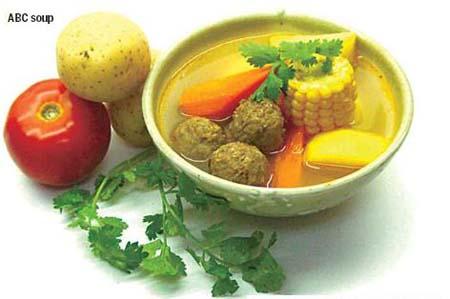Tuber treats
2010-04-15 10:19 BJT
China is the world's largest producer of potatoes and this humble tuber is the fifth most important cash crop in the country. But as far as history goes, the spud is a relative newcomer, having entered the Middle Kingdom through the Silk Route toward the end of the Ming Dynasty (1368-1644).
 |
| The humble potato, known as the "earth bean" or "horse bell root", is known throughout the country but each region has its own favorite recipe. Pauline D Loh delves deeper |
It is eaten on its own, made into starch and processed into noodles and it has more than proven its worth as a valuable food and cash crop.
Nowhere else in the world - not even in its native South America - has the spud been put to use so effectively as food and an economic resource.
In Inner Mongolia, on the way to Hohhot, you will pass a place which calls itself the "Potato Capital of China". It is a sign you may easily miss, and the unfamiliar Mongolian name may soon fade from memory - until your next meal.
Potatoes play a huge role in Mongolian cuisine, and one of the most novel ways I have seen it prepared here is a dish of naked wheat noodles coated with mashed potatoes.
Naked wheat is slippery and seasoning just slides off the noodles. Some clever cook decided to coat the noodles with mashed potatoes, and it is this rough sandy layer that traps the seasoning and adds a textured layer to the dish. Brilliant.
In Beijing, one of the most common dishes, if you eat out in the little restaurants, is a dish of potato julienne stir-fried with green chili peppers. Well-traveled I may be, but it was the first time I had eaten potatoes as a stir-fried vegetable. These days, of course, I am almost addicted. The simple stir-fry brings out the potato's real flavor and elevates it to the starring role it deserves.
It is certainly a lot healthier than greasy fries or chips.
My husband remembers a potato and meat stew from his student-farmer days in Inner Mongolia. He says the best meat is donkey meat, but since my face-to-face encounter with a long-lashed big-eyed donkey on the road to Hohhot, I have insisted on using beef.
It is a hearty stew, very basic, but just the thing for cool nights and a hungry family. The wonder of this dish is that the potatoes absorb the sweetness of the meat like sponges. And that is another reason why the potato is such a useful vegetable - it complements and enhances.
Contrary to belief, the potato itself is not fattening. It is a complex carbohydrate and it also has its own store of trace minerals and vitamins. It is only when it is deep-fried in vats of fat, and then generously salted that it becomes an unhealthy fast food.
My mother used to prove the point with what she called her ABC soup. It had vitamins A, B and C, she said and the main ingredients were potatoes, carrots and tomatoes. Sometimes, she added meatballs to the soup as a treat. I'm not certain if she got all the vitamins correct or if she used poetic license, but it was a soup that was popular all through our childhood years. And, looking at the size my brothers have grown to, mother's ABC soup must have had some effect.
And finally, here are some tips on how to find the perfect potato. Look for unblemished spuds with no dark spots or little green buds sprouting out of the eyes. If your potatoes at home have sprouted, you must shave off the buds, or they may give you a nasty tummy ache.
Potatoes come in many types, but most can be divided into waxy or floury varieties. If you are baking the potatoes or stewing them, you want the floury spuds, which are usually white-fleshed. If you are stir-frying them or want them to keep their shapes better when cooked, opt for the waxy or generally yellow-fleshed potatoes.
Potatoes should be kept in a dry, dark but airy place so they do not rot, or sprout easily.

 Mail
Mail Share
Share Print
Print


 Video
Video









 2009 China Central Television. All Rights Reserved
2009 China Central Television. All Rights Reserved